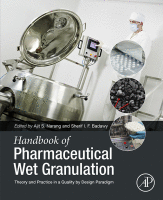Effect of Binder Attributes on Granule Growth and Densification
The rate and extent of granule growth and densification during high-shear wet granulation (HSWG) depends on a variety of formulation and process variables, including material attributes of critical formulation excipients, such as binders. The effects of known binder attributes to the rate and extent of granule growth and densification in a wet granulation process could be either specific or agnostic to a particular active pharmaceutical ingredient (API) or drug product formulation. The effect of binder properties and process variables, such as mode of addition, on the HSWG process and product performance can be explored both experimentally as well as through in silico modeling and simulation. Examples and case studies on the effect of material attributes on process performance using both experimental and modeling methodologies are presented. This chapter demonstrates the essential role of combining multiscale models such as the mechanistic, first principles-based particle-level models, and process models with experimental observations to fully understand and characterize the role of binder attributes on the process outcomes.
Read more on wet Granulation in the Handbook of Pharmaceutical Wet Granulation
- Part 1: Process Design and Product Quality Attributes
- Part 2: Excipients and Input Material Attributes Impacting Wet Granulation
- Part 3: Process Analytical Technology, Scale-up and Control Strategy
- Part 4: Process Modeling and Emerging Trends in Wet Granulation


